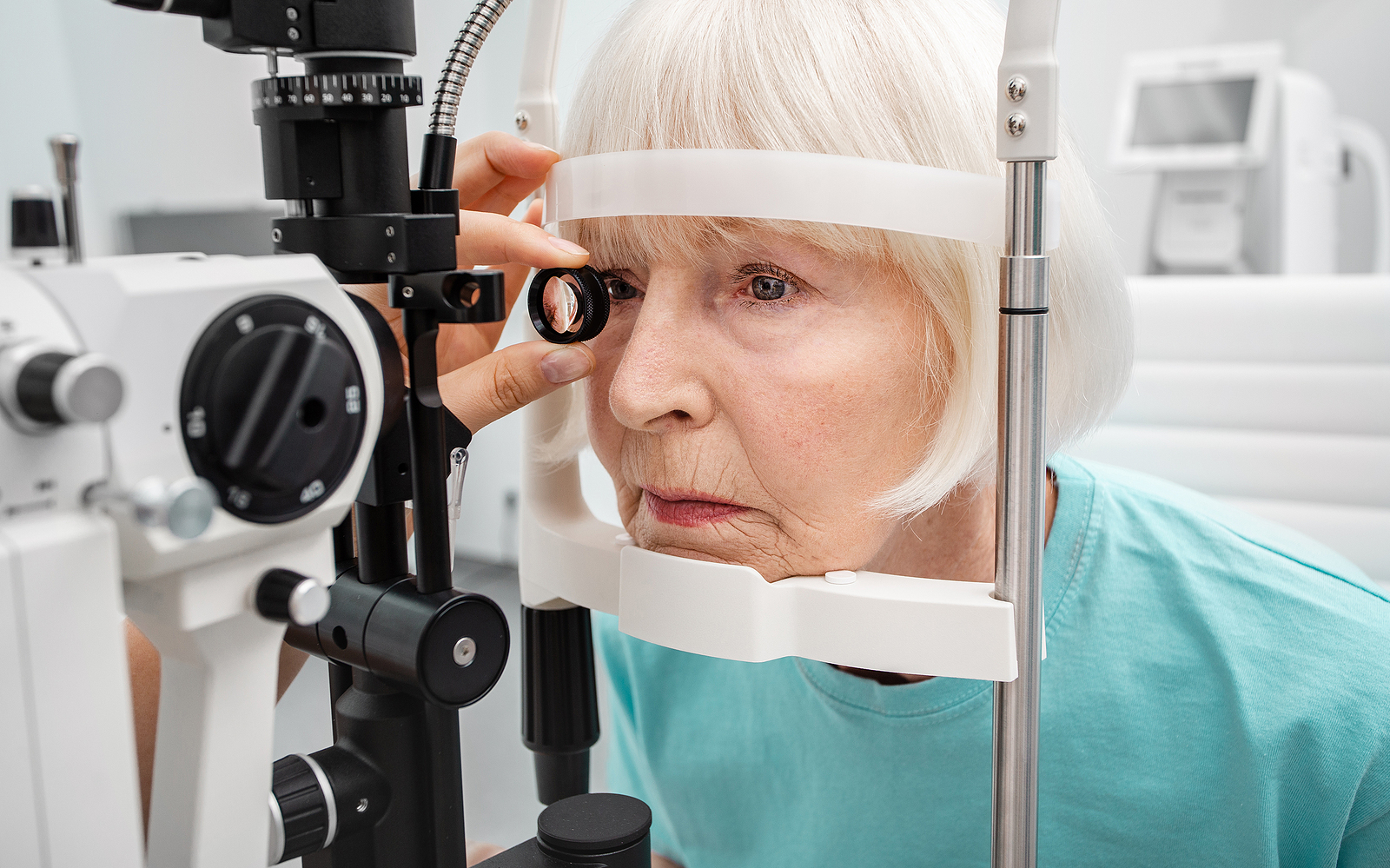Simple Ways You Can Prevent Vision Loss

Visual impairment is on the rise in the United States, but Americans can save their vision by eating vitamin-rich foods, protecting their eyes from damaging light, and visiting their eye doctor at regular intervals.
According to a study conducted by the National Eye Institute, the number of cases of visual impairment or blindness in the U.S. is set to double by 2050 — raising the number of people struggling with significant vision issues to over eight million.
The study also predicts that an additional 16.4 million Americans will experience a deterioration in their eyesight as a result of refractive errors like myopia (nearsightedness) or astigmatism that could have been corrected with a timely ophthalmological intervention.
Though these numbers are foreboding, individuals can easily incorporate a variety of strategies into their daily lives that will prevent ocular damage and mitigate the symptoms of any existing eye disorders. In honor of Save Your Vision Month, here are seven ways to preserve your eyesight.
1. Eat Lots of Fruits and Vegetables
Generally speaking, the more colorful your plate, the more beneficial it is for your body and mind. When it comes to bolstering your wellness with a nutritious diet, ocular health is no exception to this rule.
The phytochemicals found in naturally vibrant foods help fight eye disease, while the lutein and zeaxanthin found in leafy greens bolster eye health and decrease the likelihood of age-related macular degeneration (AMD).
Many red foods provide antioxidants that delay the onset of cataracts and AMD, and orange fruits and vegetables pack a healthy dose of beta-carotene. Citrus fruits in particular deliver a great deal of vitamin C that’s crucial for ocular wellness.
2. Incorporate Fish into Your Diet
Omnivores should consider rounding out their diet with seafood, as fish are rich in omega-3 fatty acids that have a bevy of health benefits, including reducing the risk of cardiovascular disease and stroke.
Research suggests eating fish is also good for one’s vision, as high concentrations of omega-3 decrease the probability of AMD by a large margin.
3. Reduce Your Screen Time
While screens produce minimal amounts of UV radiation, they still expose your eyes to harmful blue light. Though digital devices emit less blue light than other sources — the sun, for one — constant exposure to even low levels of blue light over long periods of time can lead to retinal damage and eyestrain.
To lower your risk of retinal damage and eyestrain, you should minimize your exposure to blue light by reducing the amount of time you spend watching TV, surfing the web, or using a tablet or smartphone.
Of course, there are those for whom decreased screen exposure is not possible, as many people have jobs that require them to look at a computer throughout the workday. When long stretches of screen time are a necessity, consider taking risk-reducing measures like situating your screen at least 20 inches from your eyes, adjusting your device settings to lower glare (and switching to night mode in the evening), and buying computer glasses that block blue light.
4. Always Wear Sunglasses Outdoors
Sunlight contains ultraviolet (UV) rays that put you at risk of cataracts, AMD, and pinguecula, among other eye conditions. Because some level of UV radiation is always present — even on cloudy days — it is important to protect your eyes with sunglasses that filter out 100 percent of UVA and UVB rays.
Since light hits your eyes at many angles, consider buying wraparound-style sunglasses or wearing a sun hat or visor as additional protection.
5. Get a Yearly Eye Exam
You should see your optometrist or opthamologist at least once a year after you turn 40, even if you don’t wear glasses or contact lenses. Many serious eye diseases like diabetic retinopathy and glaucoma are asymptomatic until their later stages, which is why an annual check-up is essential even if your eyes feel great.
Regardless of your age, if you notice changes in your vision, experience ocular pain or discomfort, or have a family history of eye disease, you should contact your eyecare provider immediately. Ultimately, proactive visits to the eye doctor can do wonders for your eye health — and catch serious conditions before they have already done considerable damage.
6. Keep Your Glasses or Contact Lens Prescription Up-to-date
Routine check-ups can also ensure you have the proper prescription for your glasses or contact lenses. While wearing the wrong prescription might feel like a fairly minor inconvenience, it can cause considerable eyestrain.
Asking your eye doctor to administer a comprehensive examination and recalibrate your prescription is the best way to avoid eyestrain and ensure that any degeneration in your eyesight is not due to a more serious underlying condition.
7. Invest in LASIK Surgery
Finally, if you suffer from blurry vision and are a qualified candidate, you can greatly improve your eyesight by investing in LASIK surgery. LASIK permanently improves your vision by reshaping your cornea to enable it to direct light onto your retina in a more precise fashion. If, among other things, your contact lenses continually irritate your eyes or your glasses impede your daily activities, you might be an ideal candidate for LASIK.
Learning More About Your Eyes
If you’re looking for more information about how LASIK can clarify your vision — or how you can protect your eyesight in general — schedule a consultation at the Swagel Wootton Eye Institute with our locations in Mesa and Chandler today.
[DISPLAY_ULTIMATE_SOCIAL_ICONS]








